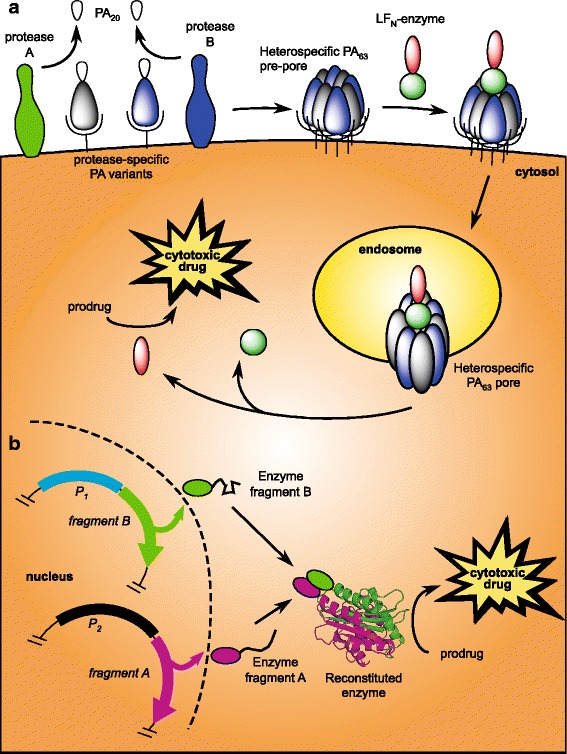Fig. 6.

Two schemes for conditionally bispecific enzyme activators for low-MW prodrugs. a Enzymes can be constructed as fusions with the N-terminus of LF to be translocated by conditional bispecific anthrax toxins (ATx). Proteolytic activation of PA and translocation of LFN-based cargos are as described in Fig. 5. In the cytosol of cells expressing both markers, the enzyme would catalyze the bioactivation of a low-MW prodrug. b Alternatively, inactive fragments or subunits of an enzyme can be targeted transcriptionally as transgenes. By placing each transgene under the control of a cell- or disease-specific different promoter (P1 and P2), functional reconstitution becomes conditional within target cells in which both promoters are active. For natively monomeric enzymes, this requires splitting of the primary sequence and likely fusion to a high-affinity oligomerization domain to drive re-assembly. Complementing split enzymes have been demonstrated for a number of systems, including β-lactamase (93), which can be used to bioactivate cephalosporin conjugates of 5-FU (41)
